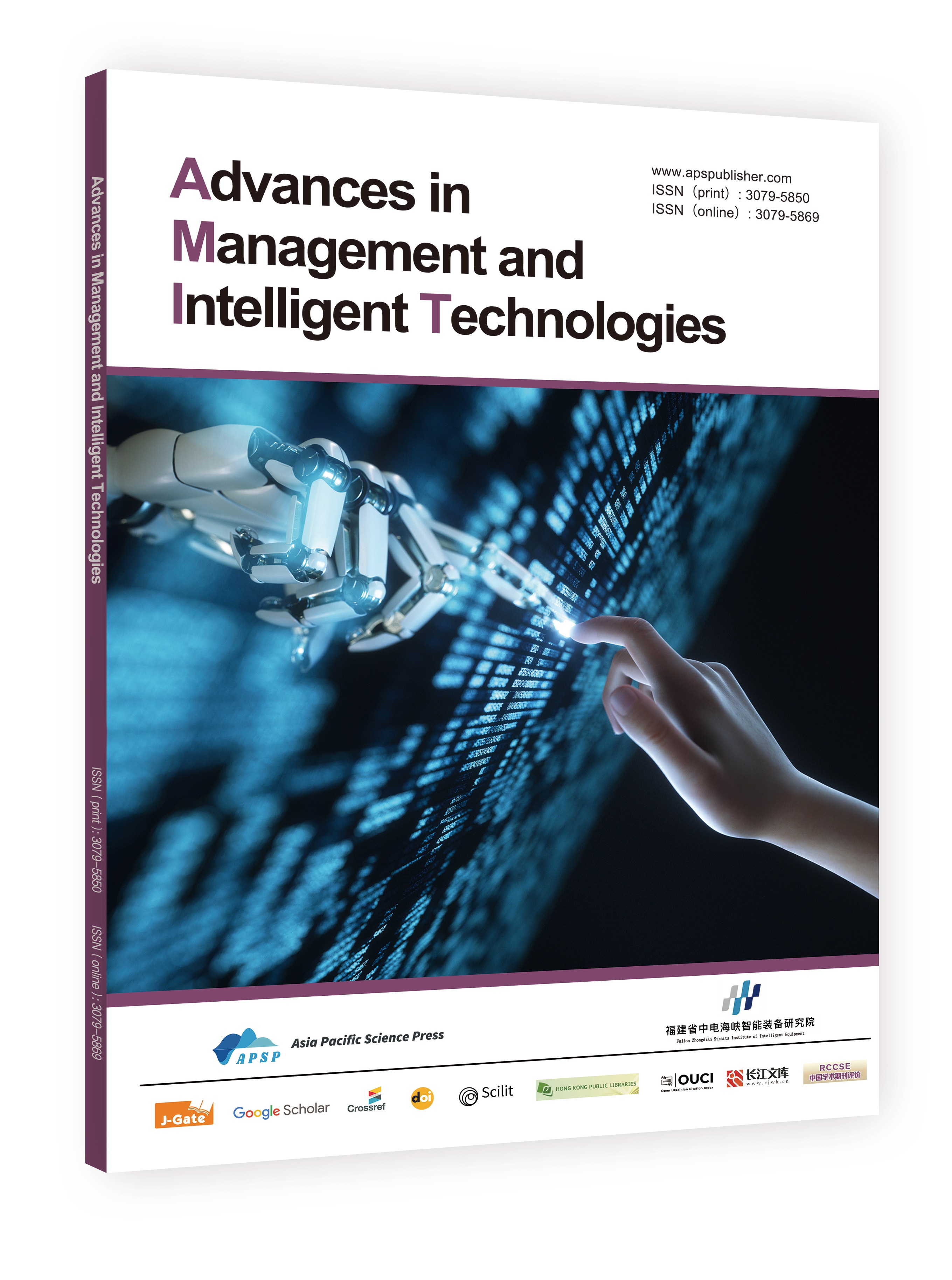Detecting Anomalies in Blockchain Transactions Using Spatial-Temporal Graph Neural Networks
DOI:
https://doi.org/10.62177/amit.v1i1.200Keywords:
Blockchain, Anomaly Detection, Graph Neural Networks, Spatial-Temporal Analysis, Fraud Detection, Transaction Networks, Decentralized FinanceAbstract
Blockchain networks have become a cornerstone of decentralized finance and digital asset management, yet they remain susceptible to fraudulent activities, money laundering, and illicit financial transactions. Traditional anomaly detection methods, including rule-based systems and supervised machine learning models, often struggle to generalize across evolving blockchain transaction patterns due to their reliance on static heuristics and manually engineered features. Graph-based learning techniques offer a more robust approach by leveraging the inherent structure of blockchain transactions, where wallets and transactions form a dynamic graph.
This study proposes a novel Spatial-Temporal Graph Neural Network (STGNN)-based anomaly detection framework for blockchain transactions. By modeling transaction flows as evolving graphs, the proposed system captures both spatial dependencies between wallets and temporal patterns in transaction sequences. The framework employs Graph Convolutional Networks (GCN) or Graph Attention Networks (GAT) to extract spatial representations, while Gated Recurrent Units (GRU) or Temporal Convolutional Networks (TCN) model the time-dependent evolution of transaction behaviors. The fusion of these spatial-temporal features enables the detection of anomalous transactions that deviate from expected network behaviors.
Experimental evaluations on real-world blockchain datasets demonstrate that the STGNN-based model achieves higher detection accuracy, lower false positive rates, and better adaptability than traditional fraud detection techniques. The study further explores the system's scalability and generalization across different blockchain networks, revealing its potential for real-time monitoring of illicit financial activities. These findings highlight the effectiveness of graph-based deep learning models in strengthening blockchain security and provide a foundation for future research in decentralized fraud detection, anti-money laundering (AML) compliance, and intelligent financial surveillance.
Downloads
References
Hasan, M., Rahman, M. S., Janicke, H., & Sarker, I. H. (2024). Detecting anomalies in blockchain transactions using machine learning classifiers and explainability analysis. Blockchain: Research and Applications, 5(3), 100207.
Lee, Z., Wu, Y. C., & Wang, X. (2023, October). Automated Machine Learning in Waste Classification: A Revolutionary Approach to Efficiency and Accuracy. In Proceedings of the 2023 12th International Conference on Computing and Pattern Recognition (pp. 299-303).
Cholevas, C., Angeli, E., Sereti, Z., Mavrikos, E., & Tsekouras, G. E. (2024). Anomaly detection in blockchain networks using unsupervised learning: A survey. Algorithms, 17(5), 201.
Liu, Y., Wu, Y. C., Fu, H., Guo, W. Y., & Wang, X. (2023). Digital intervention in improving the outcomes of mental health among LGBTQ+ youth: a systematic review. Frontiers in psychology, 14, 1242928.
Chithanuru, V., & Ramaiah, M. (2023). An anomaly detection on blockchain infrastructure using artificial intelligence techniques: Challenges and future directions–A review. Concurrency and Computation: Practice and Experience, 35(22), e7724.
Kim, J., Nakashima, M., Fan, W., Wuthier, S., Zhou, X., Kim, I., & Chang, S. Y. (2021, May). Anomaly detection based on traffic monitoring for secure blockchain networking. In 2021 IEEE International Conference on Blockchain and Cryptocurrency (ICBC) (pp. 1-9). IEEE.
Shayegan, M. J., Sabor, H. R., Uddin, M., & Chen, C. L. (2022). A collective anomaly detection technique to detect crypto wallet frauds on bitcoin network. Symmetry, 14(2), 328.
Hisham, S., Makhtar, M., & Aziz, A. A. (2022). Combining multiple classifiers using ensemble method for anomaly detection in blockchain networks: A comprehensive review. International Journal of Advanced Computer Science and Applications, 13(8).
Kamišalić, A., Kramberger, R., & Fister Jr, I. (2021). Synergy of blockchain technology and data mining techniques for anomaly detection. Applied Sciences, 11(17), 7987.
Ofori-Boateng, D., Dominguez, I. S., Akcora, C., Kantarcioglu, M., & Gel, Y. R. (2021). Topological anomaly detection in dynamic multilayer blockchain networks. In Machine Learning and Knowledge Discovery in Databases. Research Track: European Conference, ECML PKDD 2021, Bilbao, Spain, September 13–17, 2021, Proceedings, Part I 21 (pp. 788-804). Springer International Publishing.
Chen, S., Liu, Y., Zhang, Q., Shao, Z., & Wang, Z. (2025). Multi‐Distance Spatial‐Temporal Graph Neural Network for Anomaly Detection in Blockchain Transactions. Advanced Intelligent Systems, 2400898.
Yazdinejad, A., Dehghantanha, A., Parizi, R. M., Hammoudeh, M., Karimipour, H., & Srivastava, G. (2022). Block hunter: Federated learning for cyber threat hunting in blockchain-based iiot networks. IEEE Transactions on Industrial Informatics, 18(11), 8356-8366.
Behrouz, A., & Seltzer, M. (2022). Anomaly detection in multiplex dynamic networks: from blockchain security to brain disease prediction. arXiv preprint arXiv:2211.08378.
Ashfaq, T., Khalid, R., Yahaya, A. S., Aslam, S., Azar, A. T., Alsafari, S., & Hameed, I. A. (2022). A machine learning and blockchain based efficient fraud detection mechanism. Sensors, 22(19), 7162.
Fadi, O., Karim, Z., & Mohammed, B. (2022). A survey on blockchain and artificial intelligence technologies for enhancing security and privacy in smart environments. IEEE Access, 10, 93168-93186.
Alturkistani, H., & El-Affendi, M. A. (2022). Optimizing cybersecurity incident response decisions using deep reinforcement learning. International Journal of Electrical and Computer Engineering, 12(6), 6768.
Li, X., Wang, X., Chen, X., Lu, Y., Fu, H., & Wu, Y. C. (2024). Unlabeled data selection for active learning in image classification. Scientific Reports, 14(1), 424.
Liang, Y., Wang, X., Wu, Y. C., Fu, H., & Zhou, M. (2023). A study on blockchain sandwich attack strategies based on mechanism design game theory. Electronics, 12(21), 4417.
Schlette, D., Caselli, M., & Pernul, G. (2021). A comparative study on cyber threat intelligence: The security incident response perspective. IEEE Communications Surveys & Tutorials, 23(4), 2525-2556.
Mouratidis, H., Islam, S., Santos-Olmo, A., Sanchez, L. E., & Ismail, U. M. (2023). Modelling language for cyber security incident handling for critical infrastructures. Computers & Security, 128, 103139.
Oriola, O., Adeyemo, A. B., Papadaki, M., & Kotzé, E. (2021). A collaborative approach for national cybersecurity incident management. Information & Computer Security, 29(3), 457-484.
He, Y., Zamani, E. D., Lloyd, S., & Luo, C. (2022). Agile incident response (AIR): Improving the incident response process in healthcare. International Journal of Information Management, 62, 102435.
Wang, X., Wu, Y. C., & Ma, Z. (2024). Blockchain in the courtroom: exploring its evidentiary significance and procedural implications in US judicial processes. Frontiers in Blockchain, 7, 1306058.
Wang, X., Wu, Y. C., Zhou, M., & Fu, H. (2024). Beyond surveillance: privacy, ethics, and regulations in face recognition technology. Frontiers in big data, 7, 1337465.
Guo, H., Ma, Z., Chen, X., Wang, X., Xu, J., & Zheng, Y. (2024). Generating artistic portraits from face photos with feature disentanglement and reconstruction. Electronics, 13(5), 955.
Andrade, R. O., Cordova, D., Ortiz-Garcés, I., Fuertes, W., & Cazares, M. (2021). A comprehensive study about cybersecurity incident response capabilities in Ecuador. In Innovation and Research: A Driving Force for Socio-Econo-Technological Development 1st (pp. 281-292). Springer International Publishing.
Fauziyah, F., Wang, Z., & Joy, G. (2022). Knowledge Management Strategy for Handling Cyber Attacks in E-Commerce with Computer Security Incident Response Team (CSIRT). Journal of Information Security, 13(4), 294-311.
Ahmad, A., Maynard, S. B., Desouza, K. C., Kotsias, J., Whitty, M. T., & Baskerville, R. L. (2021). How can organizations develop situation awareness for incident response: A case study of management practice. Computers & Security, 101, 102122.
van der Kleij, R., Schraagen, J. M., Cadet, B., & Young, H. (2022). Developing decision support for cybersecurity threat and incident managers. Computers & Security, 113, 102535.
Downloads
Issue
Section
License
Copyright (c) 2025 Hanan Al-Harbi

This work is licensed under a Creative Commons Attribution-NonCommercial 4.0 International License.

















